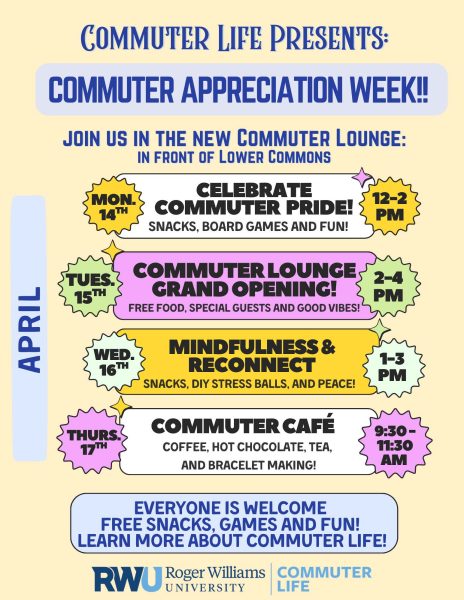Changes underway in dining this fall
Roger Williams University has recently made changes to its lower commons meal plan hours which can be seen on the GET app.
As RWU has slowly removed COVID-19 restrictions with pandemic conditions in the state improving, dining also changed going into the fall 2022 semester.
One of the more significant changes is students can only use meal swipes at Lower Commons from 11 a.m. to 3 p.m. Monday through Friday where in the past couple of semesters the amount of time to use meal swipes was until 8 p.m. on weekdays.
Sophomore Daniel Fontana said he did not like the meal swipe hour decrease.
“I’m not a fan,” said Fontana. “I really liked it last year how you were able to go down at most times in the week and use a meal swipe because hawk dollars are very limited. You don’t get too many and you go through them pretty quickly.”
Senior Jackson Lower said he thought financial reasons were the primary motivation for the meal swipe time alteration.
“I think they did it because they [the university] don’t like spending money,” said Lower.
RWU Dining General Manager James Gubata recognized students may not like reduced time for meal swipes at Lower Commons. “I knew I was going to get some feedback. It’s not going to be a very popular decision,” said Gubata.
There were a multitude of reasons why the decision to reduce meal swipe hours at Lower Commons had been made however.
One of which was what dining has had an ongoing commitment to for the last few years. Sustainability. Gubata said for safety reasons meal swipes were allowed at Lower Commons at the start of the pandemic to spread students out as much as the university could. Students would not have to be around people at Upper Commons to try and prevent spreading COVID and they could quickly grab takeout from Lower Commons ordered on the GET App.
This led to an increase in food and takeout consumption at Lower Commons. “People were loading up a whole bag of food and consumed twice as much food as we [Lower Commons] go through,” said Gubata. Resultantly, more disposable take-out containers were used which was not good for both financial and sustainability reasons.
“With all of the takeout orders, it increased our cost of single use disposable plastics and paper by hundreds of thousands of dollars. I believe it was close to a half a million dollars worth of takeout containers in one year,” said Gubata. “That was all a very unsustainable practice. We’re hoping to reduce single use plastics significantly from what we had to use the last two years.”
Students took advantage of takeout at times for the convenience factor of being able to grab and go and Gubata said he recognized students liked the ability to have takeout and use meal swipes at Lower so he wanted to meet them halfway.
“We still allow a meal transfer at lunchtime because we’re thinking students at that time are really busy with their academic schedule.”
Upper Commons has fully in-person dining and is now free from single use disposables as well.
A positive from reducing meal swipe times at Lower Commons and having fully in-person dining Gubata said is that it encourages students to “break bread” with their fellow classmates in the dining halls more than during the height of the pandemic where students a lot of the time would eat in their room alone for different reasons.
In the future Gubata said he hopes dining could incorporate a more efficient takeout system at a dining location potentially with high quality reusable containers students could take and then drop off to be cleaned.

Jimmy Sadowski is a journalist with experience in print, multimedia, and broadcast journalism. Sadowski’s specialty is news, but can also provide...

Chloe Noyes is the Photo Editor of the Hawks' Herald. She is a senior studying Communications and Media Studies with a Core Concentration in Visual Arts,...





